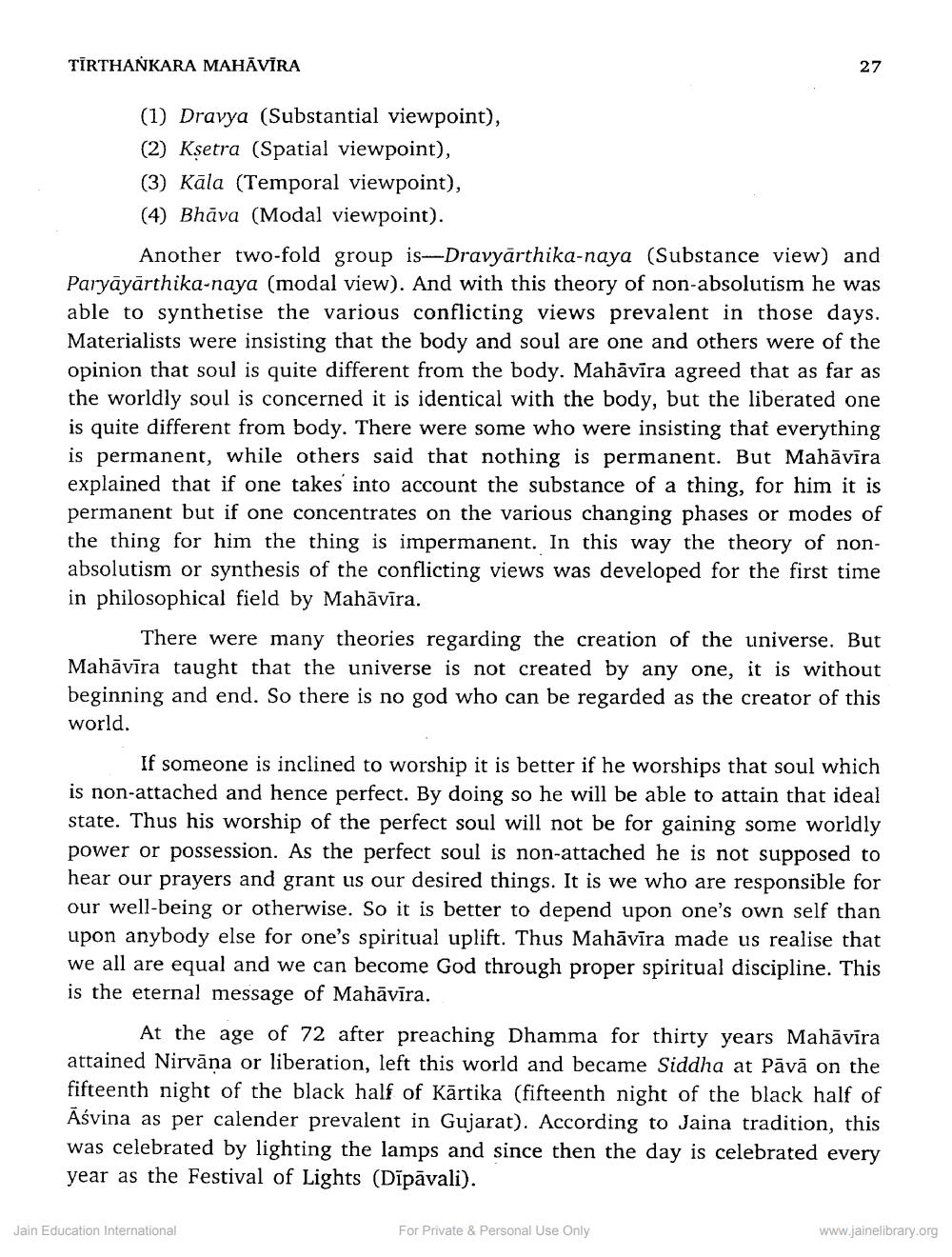________________
TĪRTHANKARA MAHĀVĪRA
(1) Dravya (Substantial viewpoint), (2) Kșetra (Spatial viewpoint), (3) Kāla (Temporal viewpoint), (4) Bhāva (Modal viewpoint).
Another two-fold group is-Dravyārthika-naya (Substance view) and Paryāyārthika-naya (modal view). And with this theory of non-absolutism he was able to synthetise the various conflicting views prevalent in those days. Materialists were insisting that the body and soul are one and others were of the opinion that soul is quite different from the body. Mahāvīra agreed that as far as the worldly soul is concerned it is identical with the body, but the liberated one is quite different from body. There were some who were insisting that everything is permanent, while others said that nothing is permanent. But Mahāvīra explained that if one takes into account the substance of a thing, for him it is permanent but if one concentrates on the various changing phases or modes of the thing for him the thing is impermanent. In this way the theory of nonabsolutism or synthesis of the conflicting views was developed for the first time in philosophical field by Mahāvīra.
There were many theories regarding the creation of the universe. But Mahāvīra taught that the universe is not created by any one, it is without beginning and end. So there is no god who can be regarded as the creator of this world.
If someone is inclined to worship it is better if he worships that soul which is non-attached and hence perfect. By doing so he will be able to attain that ideal state. Thus his worship of the perfect soul will not be for gaining some worldly power or possession. As the perfect soul is non-attached he is not supposed to hear our prayers and grant us our desired things. It is we who are responsible for our well-being or otherwise. So it is better to depend upon one's own self than upon anybody else for one's spiritual uplift. Thus Mahāvīra made us realise that we all are equal and we can become God through proper spiritual discipline. This is the eternal message of Mahāvīra.
At the age of 72 after preaching Dhamma for thirty years Mahāvira attained Nirvāna or liberation, left this world and became Siddha at Pāvā on the fifteenth night of the black half of Kārtika (fifteenth night of the black half of Asvina as per calender prevalent in Gujarat). According to Jaina tradition, this was celebrated by lighting the lamps and since then the day is celebrated every year as the Festival of Lights (Dīpāvali).
Jain Education International
For Private & Personal Use Only
www.jainelibrary.org




